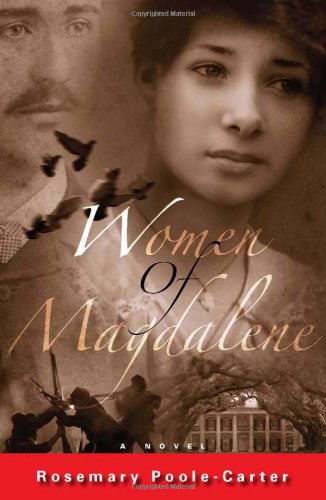Women of Magdalene
Robert Mallory is a young doctor who saw three years of horrifying medical service in the Civil War. Estranged from his family, he is hired by a family friend, Dr. Kingston, to be the general practitioner of the Magdalene Ladies’ Lunatic Asylum near Baton Rouge, Louisiana. En route to the asylum, he finds the body of a woman who he learns was an inmate trying to escape. He gradually learns of other unexplained deaths at the asylum, although the asylum’s misogynistic and racist director is unconcerned about them or any of his inmates, except in their potential for his own pleasure and monetary enrichment. The novel’s atmosphere is thick with sensuality reminiscent of Anne Rice’s novels. Here, the sensuality is not supernatural but latent in the yearning Mallory develops for the asylum’s young, mute laundress/patient, and also expressed through the lurid makeup and garish gowns of the director’s favorite inmates.
It can’t be accidental that the author chose “Magdalene” for the asylum’s name. Just as the Magdalene laundries of Catholic Ireland were the forced homes of fallen women, women in 19th-century America were sometimes institutionalized by their male family members if these women suffered from wayward behavior, independent thought, or perhaps just the burden of wealth. Dr. Kingston profited greatly from these discarded women, only some of whom actually suffered from any real mental illness.
The action is often seen through the miasma of Mallory’s attacks of malaria, often accompanied by the guilt he carried for his role in the death of his sister. His need for redemption and his determination to right the wrongs perpetrated at Magdalene carry the novel’s intense drive and growing horror. With its principled, haunted hero, this is a well-written, dark gothic novel that doesn’t go over the top. It is highly recommended.










